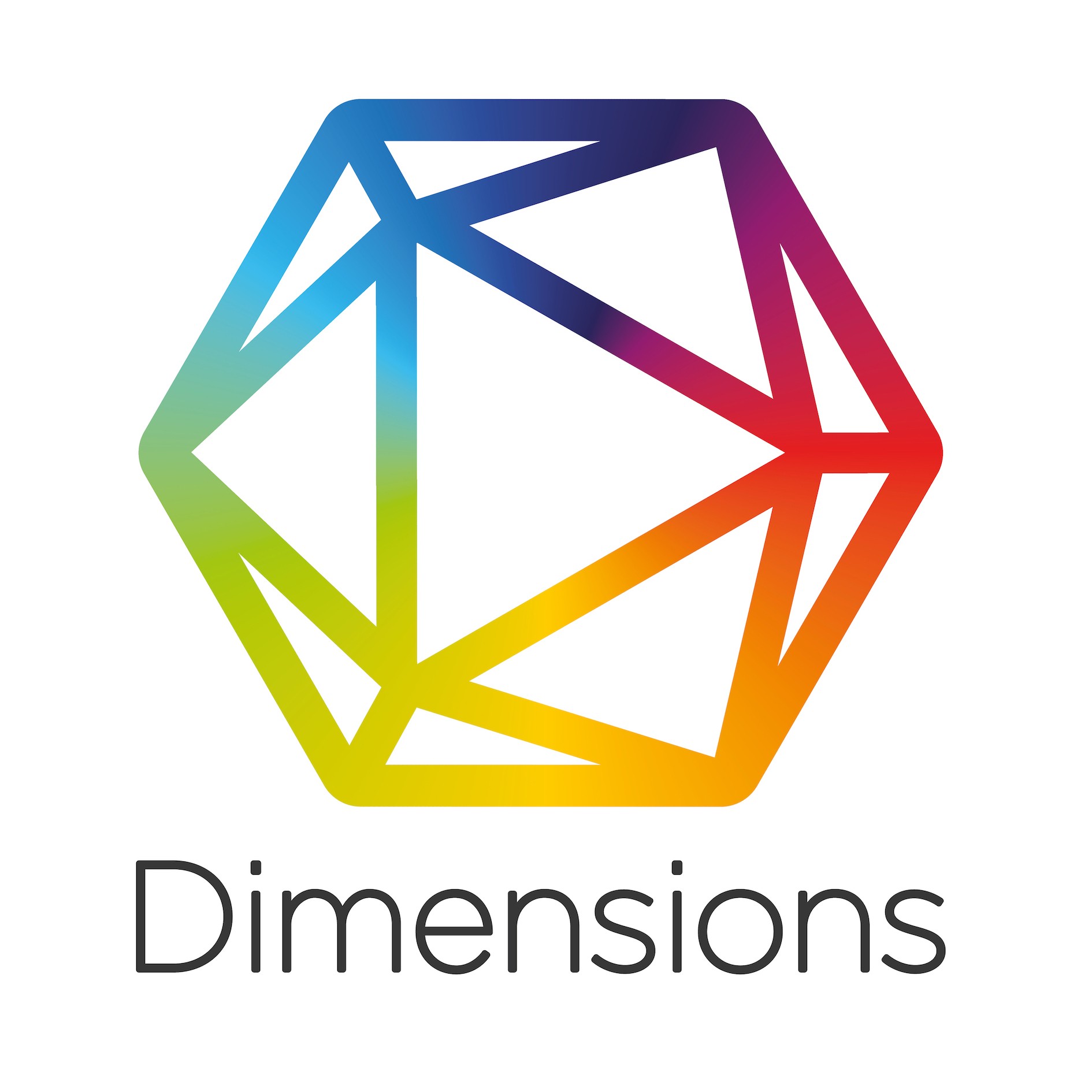Prediksi Gratitude terhadap Body Image pada Remaja di Indonesia
DOI:
https://doi.org/10.25170/manasa.v14i1.6580Keywords:
body image, gratitude, adolescent, physicalAbstract
Body image is a critical aspect of adolescent development because the physical changes often trigger feelings of dissatisfaction, which increase the risk of developing a negative body image. A negative body image can lead to various adverse effects, such as feelings of inferiority, difficulty in self-acceptance, and even mental health problems. These can be mitigated by fostering a more positive body image through the practice of gratitude. High levels of gratitude can help adolescents accept their bodies better by focusing on positive aspects. Therefore, this study aims to examine the predictive role of gratitude on body image among adolescents. This quantitative study involved 455 adolescent participants aged 13-18 years residing in Indonesia. Data were collected using a non-probability sampling technique, specifically convenience sampling. The instruments used were the Multidimensional Body-Self Relations Questionnaire-Appearance Scales (MBSRQ-AS) and the Skala Bersyukur Indonesia (SBI). This study employed a correlational design with simple linear regression statistical techniques for data analysis. The research results indicate that gratitude can significantly predict body image in adolescents. Additional findings reveal a negative relationship between Body Mass Index (BMI) and body image. To gain a deeper understanding of these two variables, future researchers may consider external factors that can influence body image, such as social media, family, or peers.
References
Ahadzadeh, A. S., Rafik-Galea, S., Alavi, M., & Amini, M. (2018). Relationship between body mass index, body image, and fear of negative evaluation: Moderating role of self-esteem. Health Psychology Open, 5(1). https://doi.org/10.1177/2055102918774251
Ahuja, L., Schneider, J., Budhraja, M., Diedrichs, P. C., & Williamson, H. (2024). A systematic review exploring the effectiveness of body image interventions among boys. Adolescent Research Review. https://doi.org/10.1007/s40894-024-00246-y
Al Sabbah, H., Vereecken, C. A., Elgar, F. J., Nansel, T., Aasvee, K., Abdeen, Z., Ojala, K., Ahluwalia, N., & Maes, L. (2009). Body weight dissatisfaction and communication with parents among adolescents in 24 countries: International cross-sectional survey. BMC Public Health, 9(52), 1–10. https://doi.org/10.1186/1471-2458-9-52
Ålgars, M., Santtila, P., Varjonen, M., Witting, K., Johansson, A., Jern, P., & Sandnabba, N. K. (2009). The adult body: How age, gender, and body mass index are related to body image. Journal of Aging and Health, 21(8), 1112–1132. https://doi.org/10.1177/0898264309348023
Alidia, F. (2018). Body image siswa ditinjau dari gender. Jurnal Tarbawi: Jurnal Ilmu Pendidikan, 14(2), 79–92. https://doi.org/10.32939/tarbawi.v14i2.291
Andiyati, A. D. W. (2016). Hubungan antara body image dengan kepercayaan diri siswa kelas X di SMA Negeri 2 Bantul. E-Journal Bimbingan Dan Konseling, 4, 80–88.
Aristantya, E. K., & Helmi, A. F. (2019). Citra tubuh pada remaja pengguna instagram. Gadjah Mada Journal of Psychology (GamaJoP), 5(2), 114. https://doi.org/10.22146/gamajop.50624
Az Zahra, A. C., Shanti, P., & Hutagalung, F. D. (2022). The influence of gratitude on body image among male adolescents. KnE Social Sciences, 7(1), 11–24. https://doi.org/10.18502/kss.v7i1.10197
Bakan, L. N., & Hapsari, E. W. (2022). Hubungan antara gratitude dengan citra tubuh pada remaja putri di Kabupaten Alor. Jurnal Experientia, 10(1), 46–60.
Baker, J. H., Neyland, M. K. H., Thornton, L. M., Runfola, C. D., Larsson, H., Lichtenstein, P., & Bulik, C. (2019). Body dissatisfaction in adolescent boys. Developmental Psychology, 55(7), 1566–1578. https://doi.org/10.1037/dev0000724
Calogero, R. M., & Thompson, J. K. (2010). Gender and body image. In Handbook of Gender Research in Psychology (pp. 153–184). Springer New York. https://doi.org/10.1007/978-1-4419-1467-5_8
Calzo, J. P., Corliss, H. L., Blood, E. A., Field, A. E., & Austin, B. S. (2013). Development of muscularity and weight concerns in heterosexual and sexual minority males. Health Psychology, 32(1), 42–51. https://doi.org/10.1037/a0028964
Cash, T. F. (2004). Body image: Past, present, and future. Body Image, 1(1), 1–5. https://doi.org/10.1016/S1740-1445(03)00011-1
Cash, T. F. (2012). Cognitive-behavioral perspectives on body image. In Encyclopedia of Body Image and Human Appearance (Vol. 1, pp. 334–342). Elsevier Inc. https://doi.org/10.1016/B978-0-12-384925-0.00054-7
Cash, T. F., & Pruzinsky, T. (2002). A handbook of theory, research, and clinical practice. The Guilford Press.
Cash, T. F., & Smolak, L. (2011). Body image: A handbook of science, practice, and prevention (2nd ed.). The Guilford Press.
Chen, G., Guo, G., Gong, J., & Xiao, S. (2015). The association between body dissatisfaction and depression: An examination of the moderating effects of gender, age, and weight status in a sample of chinese adolescents. Journal of Psychologists and Counsellors in Schools, 25(2), 245–260. https://doi.org/10.1017/jgc.2015.6
Creswell, J. (2015). Educational research: Planning, conducting, and evaluating quantitative and qualitative research (5th ed.). Pearson Education, Inc.
Digdowiseiso, K. (2017). Metodologi penelitian ekonomi dan bisnis. Lembaga Penerbitan Universitas Nasional.
Duchesne, A. P., Dion, J., Lalande, D., Bégin, C., Émond, C., Lalande, G., & McDuff, P. (2017). Body dissatisfaction and psychological distress in adolescents: Is self-esteem a mediator? Journal of Health Psychology, 22(12), 1563–1569. https://doi.org/10.1177/1359105316631196
Dunaev, J., Markey, C. H., & Brochu, P. M. (2018). An attitude of gratitude: The effects of body-focused gratitude on weight bias internalization and body image. Body Image, 25, 9–13. https://doi.org/10.1016/j.bodyim.2018.01.006
Dwinanda, R. F. (2016). Hubungan gratitude dengan citra tubuh pada remaja. Jurnal Ilmiah Psikologi, 9(1), 31–41.
Field, A. (2024). Discovering statistics using IBM SPSS statistics (6th ed.). SAGE Publications.
Fitzgerald, P. (1998). Gratitude and justice. Ethics, 109(1), 119–153. https://doi.org/10.1086/233876
Fogelkvist, M., Parling, T., Kjellin, L., & Gustafsson, S. A. (2016). A qualitative analysis of participants’ reflections on body image during participation in a randomized controlled trial of acceptance and commitment therapy. Journal of Eating Disorders, 4(1). https://doi.org/10.1186/s40337-016-0120-4
Frederick, D. A., Crerand, C. E., Brown, T. A., Perez, M., Best, C. R., Cook-Cottone, C. P., Compte, E. J., Convertino, L., Gordon, A. R., Malcarne, V. L., Nagata, J. M., Parent, M. C., Pennesi, J.-L., Pila, E., Rogders, R. F., Schaefer, L. M., Thompson, J. K., Tylka, T. L., & Murray, S. B. (2022). Demographic predictors of body image satisfaction: The U.S. body project I. Body Image, 41, 17–33. https://doi.org/10.1016/j.bodyim.2022.01.011
Fredrickson, B. L., & Losada, M. F. (2005). Positive affect and the complex dynamics of human flourishing. American Psychologist, 60(7), 678–686. https://doi.org/10.1037/0003-066X.60.7.678
Geraghty, A. W. A., Wood, A. M., & Hyland, M. E. (2010). Attrition from self-directed interventions: Investigating the relationship between psychological predictors, intervention content and dropout from a body dissatisfaction intervention. Social Science and Medicine, 71(1), 30–37. https://doi.org/10.1016/j.socscimed.2010.03.007
Gila, A., Castro, J., Cesena, J., & Toro, J. (2005). Anorexia nervosa in male adolescents: Body image, eating attitudes and psychological traits. Journal of Adolescent Health, 36(3), 221–226. https://doi.org/10.1016/j.jadohealth.2004.02.039
Gillen, M. M. (2015). Associations between positive body image and indicators of men’s and women’s mental and physical health. Body Image, 13, 67–74. https://doi.org/10.1016/j.bodyim.2015.01.002
Gravetter, F. J., & Wallnau, L. B. (2017). Statistics for the behavioral sciences (10th ed.). CENGAGE Learning. www.cengage.com/highered
Gravetter, F. J., Wallnau, L. B., Forzano, L.-A. B., & Witnauer, J. E. (2021). Essentials of statistics for the behavioral sciences (10th ed.). CENGAGE Learning. www.cengage.com/highered
Gualdi-Russo, E., Rinaldo, N., & Zaccagni, L. (2022). Physical activity and body image perception in adolescents: A systematic review. International Journal of Environmental Research and Public Health, 19(20). https://doi.org/10.3390/ijerph192013190
Gunarsa, S. D., & Gunarsa, Y. S. (2008). Psikologi praktis: Anak, remaja, dan keluarga. BPK Gunung Mulia.
Hair, J. F., Black, W. C., Babin, B. J., & Anderson, R. E. (2009). Multivariate data analysis (7th ed.). Prentice Hall.
Hanun, F. (2021). Hubungan kebersyukuran dengan body image pada remaja putri di Indrapuri [Skripsi Sarjana, Universitas Islam Negeri Ar-Raniry]. Universitas Islam Negeri Ar-Raniry Repository.
Hartman-Munick, S. M., Gordon, A. R., & Guss, C. (2020). Adolescent body image: Influencing factors and the clinician’s role. Current Opinion in Pediatrics, 32(4), 455–460. https://doi.org/10.1097/MOP.0000000000000910
Hasanah, N. S., & Halimah, L. (2019). Studi deskriptif mengenai body image pada remaja awal di MTs negeri 6 Subang. Prosiding Psikologi, 5(1), 227–233.
Holsen, I., Jones, D. C., & Birkeland, M. S. (2012). Body image satisfaction among Norwegian adolescents and young adults: A longitudinal study of the influence of interpersonal relationships and BMI. Body Image, 9(2), 201–208. https://doi.org/10.1016/j.bodyim.2012.01.006
Hurlock, E. B. (2008). Psikologi perkembangan: Suatu pendekatan sepanjang rentang kehidupan (5th ed.). PT. BPK Gunung Mulia.
Jahja, Y. (2011). Psikologi perkembangan. Kencana.
Kantanista, A., Król-Zielińska, M., Borowiec, J., & Osiński, W. (2017). Is underweight associated with more positive body image? Results of a cross-sectional study in adolescent girls and boys. Spanish Journal of Psychology, 20. https://doi.org/10.1017/sjp.2017.4
Listiyandini, R. A., Nathania, A., Syahniar, D., Sonia, L., Nadya, R., & Psikologi, F. (2015). Mengukur rasa syukur: Pengembangan model awal skala bersyukur versi Indonesia. Jurnal Psikologi Ulayat, 2(2), 473–496.
McClain, Z., & Peebles, R. (2016). Body image and eating disorders among lesbian, gay, bisexual, and transgender youth. Pediatric Clinics of North America, 63(6), 1079–1090. https://doi.org/10.1016/j.pcl.2016.07.008
Mikolajczyk, R. T., Maxwell, A. E., El Ansari, W., Stock, C., Petkeviciene, J., & Guillen-Grima, F. (2010). Relationship between perceived body weight and body mass index based on self- reported height and weight among university students: A cross-sectional study in seven European countries. BMC Public Health, 10. https://doi.org/10.1186/1471-2458-10-40
Muhsin, A. (2015). Studi kasus ketidakpuasan remaja putri terhadap keadaan tubuhnya (body image negative pada remaja putri). Jurnal Bimbingan Dan Konseling, 1, 1–18.
Murnen, S. K., & Don, B. P. (2012). Body image and gender roles. In Encyclopedia of Body Image and Human Appearance (Vol. 1, pp. 128–134). Elsevier Inc. https://doi.org/10.1016/B978-0-12-384925-0.00019-5
Nurfatmawati, Mansyur, A. Y., & Hamid, H. (2022). Pengaruh kebersyukuran terhadap citra tubuh siswa SMKS. Jurnal Psikologi Talenta Mahasiswa, 2(1), 97–107.
Onggo, J. M. (2020). Hubungan antara gratitude dan positive body image pada remaja wanita di SMP X [Skripsi Sarjana, Widya Mandala Catholic University Surabaya]. Widya Mandala Catholic University Surabaya Repository.
Putro, K. Z. (2017). Memahami ciri dan tugas perkembangan masa remaja. APLIKASIA: Jurnal Aplikasi Ilmu-Ilmu Agama, 17(1), 25–32.
Radwan, H., Hasan, H. A., Ismat, H., Hakim, H., Khalid, H., Al-Fityani, L., Mohammed, R., & Ayman, A. (2019). Body mass index perception, body image dissatisfaction and their relations with weight-related behaviors among university students. International Journal of Environmental Research and Public Health, 16(9). https://doi.org/10.3390/ijerph16091541
Reel, J., Voelker, D., & Greenleaf, C. (2015). Weight status and body image perceptions in adolescents: current perspectives. Adolescent Health, Medicine and Therapeutics, 6, 149–158. https://doi.org/10.2147/ahmt.s68344
Ristiarni, C. N. (2022). Hubungan celebrity worship dengan citra tubuh pada mahasiswi penggemar k-pop di UIN Ar-Raniry Banda Aceh [Skripsi Sarjana, UIN Ar-Raniry]. UIN Ar-Raniry Repository.
Rodgers, R. F., Laveway, K., Campos, P., & de Carvalho, P. H. B. (2023). Body image as a global mental health concern. Cambridge Prisms: Global Mental Health, 10. https://doi.org/10.1017/gmh.2023.2
Santrock, J. W. (2018). Adolescence (17th ed.). McGraw-Hill.
Santrock, J. W. (2019). Life-span development (17th ed.). McGraw-Hill.
Sari, F. I., & Ansyah, E. H. (2022). The relationship between gratitude and body image for students of management study program, university of muhammadiyah Sidoarjo. Journal of Islamic and Muhammadiyah Studies, 5(2), 121–135. https://doi.org/10.21070/jims.v2i0.1536
Seligman, M. E. P., Steen, T. A., Park, N., & Peterson, C. (2005). Positive psychology progress: Empirical validation of interventions. The American Psychologist, 60(5), 410–421. https://doi.org/10.1037/0003-066X.60.5.410
Senín-Calderón, C., Rodríguez-Testal, J. F., Perona-Garcelán, S., & Perpiñá, C. (2017). Body image and adolescence: A behavioral impairment model. Psychiatry Research, 248, 121–126. https://doi.org/10.1016/j.psychres.2016.12.003
Shabira, F., & Uyun, Q. (2023). Harga diri dan kebersyukuran sebagai prediktor citra tubuh pada remaja perempuan penggemar k-pop. Psikologika: Jurnal Pemikiran Dan Penelitian Psikologi, 28(1). https://doi.org/10.20885/psikologika.vol28.iss1.art7
Shanti, P., & Az Zahra, A. C. (2022). Self esteem dan gratitude sebagai prediktor body image: Studi pada remaja laki-laki di Kota Malang. Jurnal Sains Psikologi, 11(1), 71–85. https://doi.org/10.17977/um023v11i12022p71-85
Streiner, D. L., Norman, G. R., & Cairney, J. (2015). Health measurement scales (5th ed.). Ofxord University Press.
Tewari, G., Pande, L., & Pande, K. K. (2022). Risk factors affecting body image: A systematic review. International Journal of Progressive Research in Science and Engineering, 3(5), 163–169. www.ijprse.com
Tylka, T. L., & Wood-Barcalow, N. L. (2015). What is and what is not positive body image? Conceptual foundations and construct definition. Body Image, 14, 118–129. https://doi.org/10.1016/j.bodyim.2015.04.001
Voelker, D., Reel, J., & Greenleaf, C. (2015). Weight status and body image perceptions in adolescents: current perspectives. Adolescent Health, Medicine and Therapeutics, 6, 149. https://doi.org/10.2147/ahmt.s68344
Watkins, P. C., Woodward, K., Stone, T., & Kolts, R. L. (2003). Gratitude and happiness: Development of a measure of gratitude, and relationships with subjective well-being. Social Behavior and Personality, 31(5), 431–452. https://doi.org/10.2224/sbp.2003.31.5.431
Widawati, L., Saputra, A. K., Fauziah, D. N., & Susanti, M. A. (2018). Hubungan rasa syukur dengan citra tubuh pada siswi SMA X Kota Bandung. Jurnal Psikologi, 3(1), 41–50. https://doi.org/10.21070/psikologia.v2i2.1716
Wood, A. M., Froh, J. J., & Geraghty, A. W. A. (2010). Gratitude and well-being: A review and theoretical integration. Clinical Psychology Review, 30(7), 890–905. https://doi.org/10.1016/j.cpr.2010.03.005
Yu, J. J. (2016). Trajectories of body dissatisfaction among South Korean youth: Findings from a nationally representative sample. Body Image, 19, 186–194. https://doi.org/10.1016/j.bodyim.2016.10.002
Downloads
Published
Issue
Section
License
Copyright (c) 2025 MANASA

This work is licensed under a Creative Commons Attribution-NonCommercial-ShareAlike 4.0 International License.









.png)
.png)

